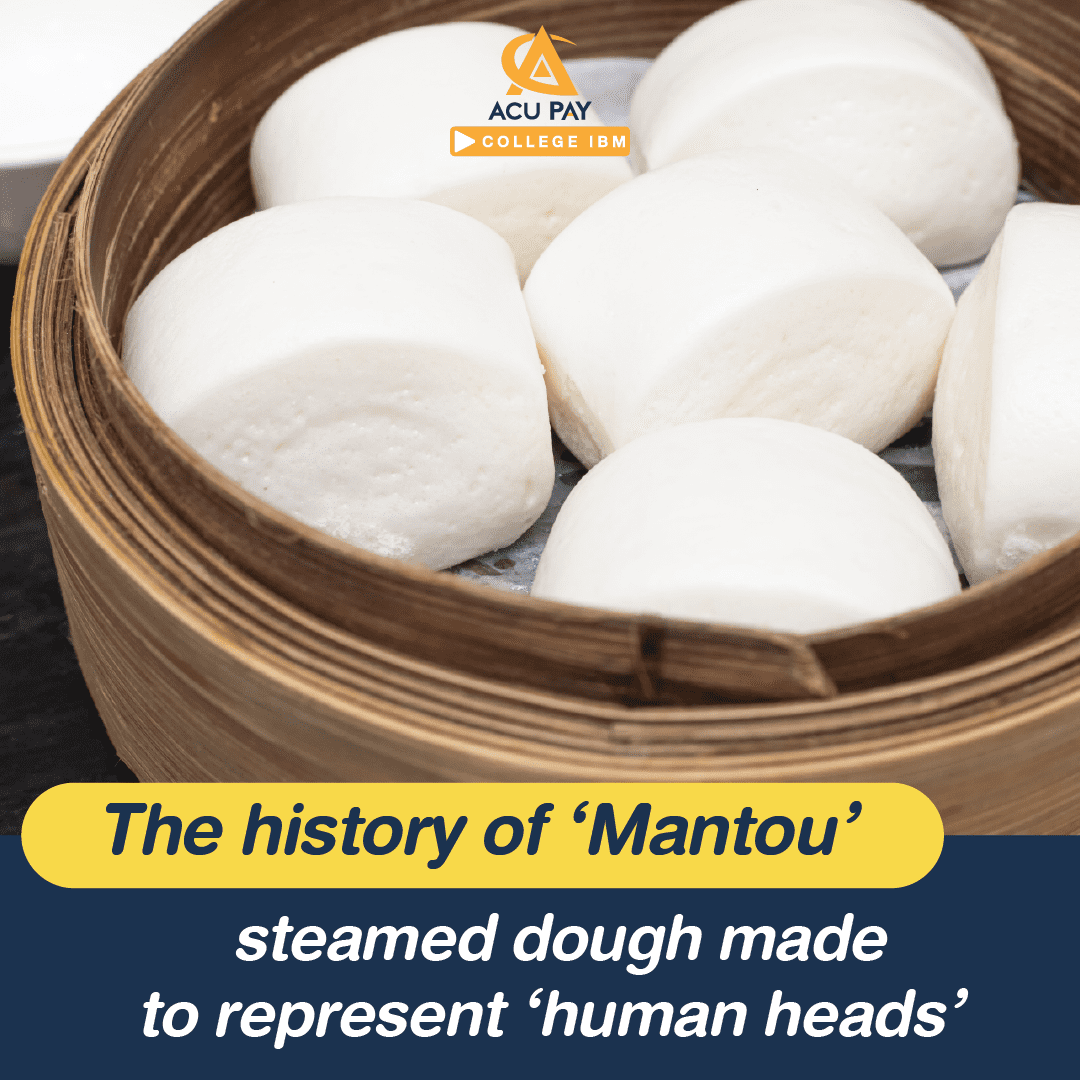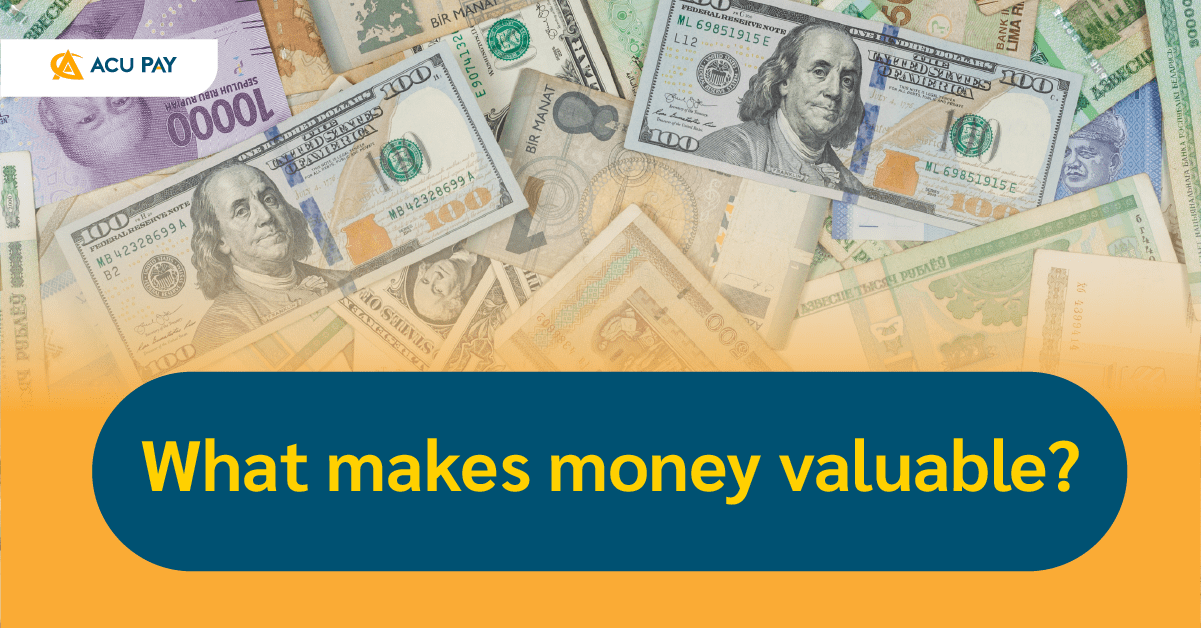

It is undeniable that money is one of the things that we cannot live without. We work so hard to get money to spend in our daily lives. Have you ever wondered how money that we use these days has value or what makes the number in the bank account valuable? If so, ACU PAY will explain it to you.
From ancient times, people needed an intermediary to use when exchanging things with other people, or at least people who we do business with agree that this intermediary is valuable to facilitate trading.
The intermediaries in the first era were shells, accessories, and leather until they were changed to metals like gold, silver, or copper, or melted those metals into coins. Since metal is rare to find and valuable, the value of coins came from the amount of metal used in making coins.
After a long period of using coins in exchanging, people found that coins are heavy and hard to carry around. Thus, there was a deposit of valuable property, metal, and gold with trusted persons or department stores.
The persons issued deposit tickets or bills of exchange to the depositors with a guarantee that the holders of these tickets can always use the ticket in exchange for deposited money or property. For this reason, people in that era started to use money paper instead of coins when trading and it was more convenient to carry around, light-weighted, and began the money paper era.
Later, it was developed into a gold standard which is a system that the government pegged the value of issued money with gold at a fixed rate and assured that whoever holds the banknotes and coins that are issued by the government can exchange those banknotes and coins for gold from government treasury according to value as specified.
In other words, the paper money at that time acted as ‘gold representative tickets’ that could be used in exchange for gold according to the stipulated value. That’s the reason why the government could not issue as much money as it wanted to because gold always needed to be used as a guarantee.
In 1944, there was a major change in the global financial system. Representatives from 44 countries formed the Bretton Woods agreement, which is known as a modern gold standard system, to promote international trade and security of the world economy after World War II.
Under this agreement, the United States of America, which had the most gold preserved in the treasury at that time, was responsible for pegging the value of the dollar with gold with a guarantee that whoever held the dollars could exchange them for gold from the USA treasury at the rate of 35 dollars for 1 ounce of gold.
Other countries would keep dollars money in its treasury as a reserves property to peg its money value to dollar currency which acted like gold. Some called this system ‘pseudo-gold standard’ or the fact that gold in the U.S. treasury makes the dollar valuable, while the dollar (acting like gold) makes other currencies valuable.
The Bretton Woods agreement also created a new role for the dollar as a new standard for international trade, and it has also spawned two international organizations to support international trade and finance such as the IMF or the International Monetary Fund and the World Bank.
For more than decades, the Bretton Woods system has helped promote international trade and finance and stabilize currencies. During the Cold War, the United States and other countries spent a great deal of money on security and competition with the Soviet Union. By the end of the 1960s, it became clear that the United States no longer had enough gold to support every dollar printed according to the Bretton Woods Agreement.
The end of the Bretton Woods system began in 1971 when President Nixon announced an increase in the dollar/gold exchange rate from 35 dollars per ounce to 38 dollars per ounce.
Also terminated the guarantee of exchanging dollars for gold from the government treasury till it caused the thing called ‘Nixon shock’ that caused so much turmoil in international financial markets that many countries have gradually canceled the peg of currency and eventually collapsed the Bretton Woods system.
If it is like this, what keeps the currency in different currencies to have value at present?
Later in the 1980s, a new standard was born that made money have value. That is a system called “Fiat” or “Fiat Money” derived from the Latin “it shall be”, meaning money has value because the government defined it that way.
In the Fiat system, the value given to banknotes and numbers in the bank accounts is no longer gold or tangible assets, but the government guarantees that this money can be repaid and exchanged for goods legally. The value of money will depend on responsible fiscal policy and the laws in that country follow market mechanisms, demand-supply, policies, reliability and international reserves held by the currency issuing government.
The ability to print as much money as the government wants gives the government and banks a fairly decisive tool and authority to control money in the system and regulate the country’s financial system. However, the Fiat currency has disadvantages such as not being able to keep its value in the long run because it can cause inflation.
After seeing the world’s financial system go through hundreds and thousands of years of changes, no one can assure that Fiat money could be the last financial system for mankind.
These days, the growth of digital currency (Cryptocurrency) is increasing, especially the Bitcoin and Coinbase Wallet, where some countries have begun to legally use them in exchange. It is uncertain that in the future these digital currencies may replace the Fiat currency system.
Even so, the only thing that remains is that as long as humans have to trade with each other, the money system still exists, but there may be a pattern that changes over time.